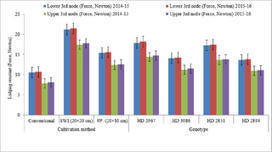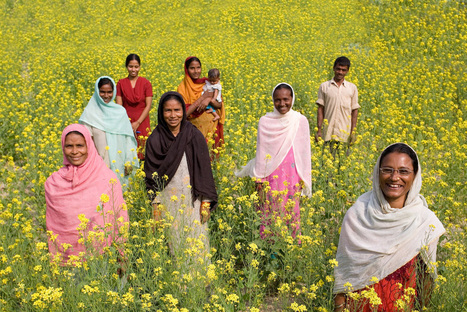Intense cultivation with narrow row spacing in wheat, a common practice in the Indo-Gangetic plains of South Asia, renders the crop more susceptible to lodging during physiological maturity. This susceptibility, compounded by the use of traditional crop cultivars, has led to a substantial decline in overall crop productivity. The results of a two-year field study on the system of wheat intensification (SWI) was conducted suggested that adoption of SWI at 20 cm × 20 cm resulted in significantly higher intercellular CO2 concentration (5.9–6.3%), transpiration rate (13.2–15.8%), stomatal conductance (55–59%), net photosynthetic rate (126–160%), and photosynthetically active radiation (PAR) interception (1.6–25.2%) over the existing conventional method (plant geometry 22.5 cm × continuous plant to plant spacing) of wheat cultivation.
The lodging resistance capacity of both the lower and upper 3rd nodes was significantly higher in the SWI compared to other cultivation methods. In addition, adoption of the SWI at 20 cm × 20 cm enhanced crop grain yield by 36.9–41.6%, and biological yield by 27.5–29.8%.. Further, increased root volumes, surface root density and higher NPK uptake were recorded under SWI at 20×20 cm in comparison to rest of the treatments. Therefore, adoption of SWI at 20 cm ×20 cm and square planting (with cultivars HD 2967) might be the best strategy for enhancing crop productivity and resource-use efficiency.



 Your new post is loading...
Your new post is loading...











r.K. Singh, P.K. Upadhyay, et al. 2024. System of wheat intensification (SWI): Effects on lodging resistance, photosynthetic efficiency, soil biomes, and water productivity. PLoS ONE 19(4): e0299785. doi:10.1371/journal.pone.0299785